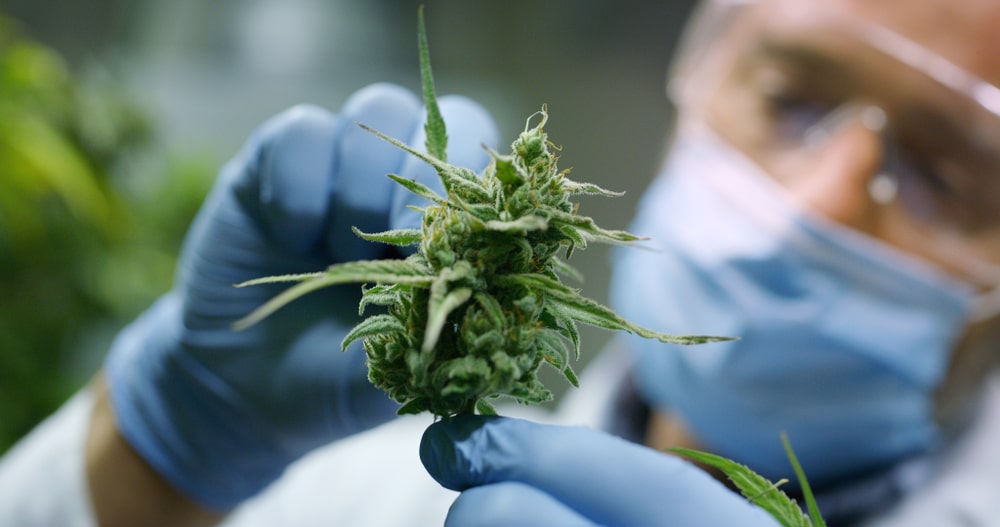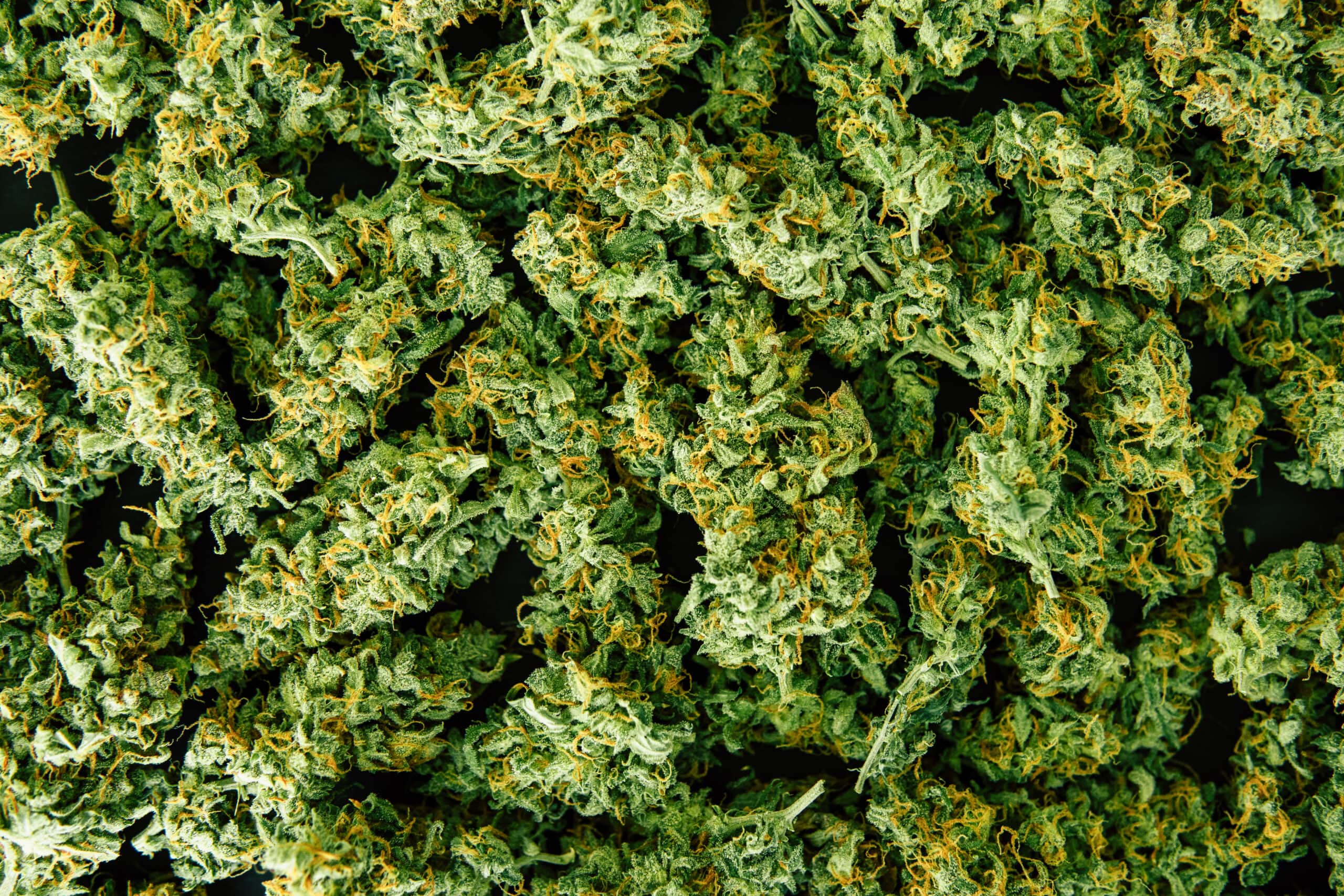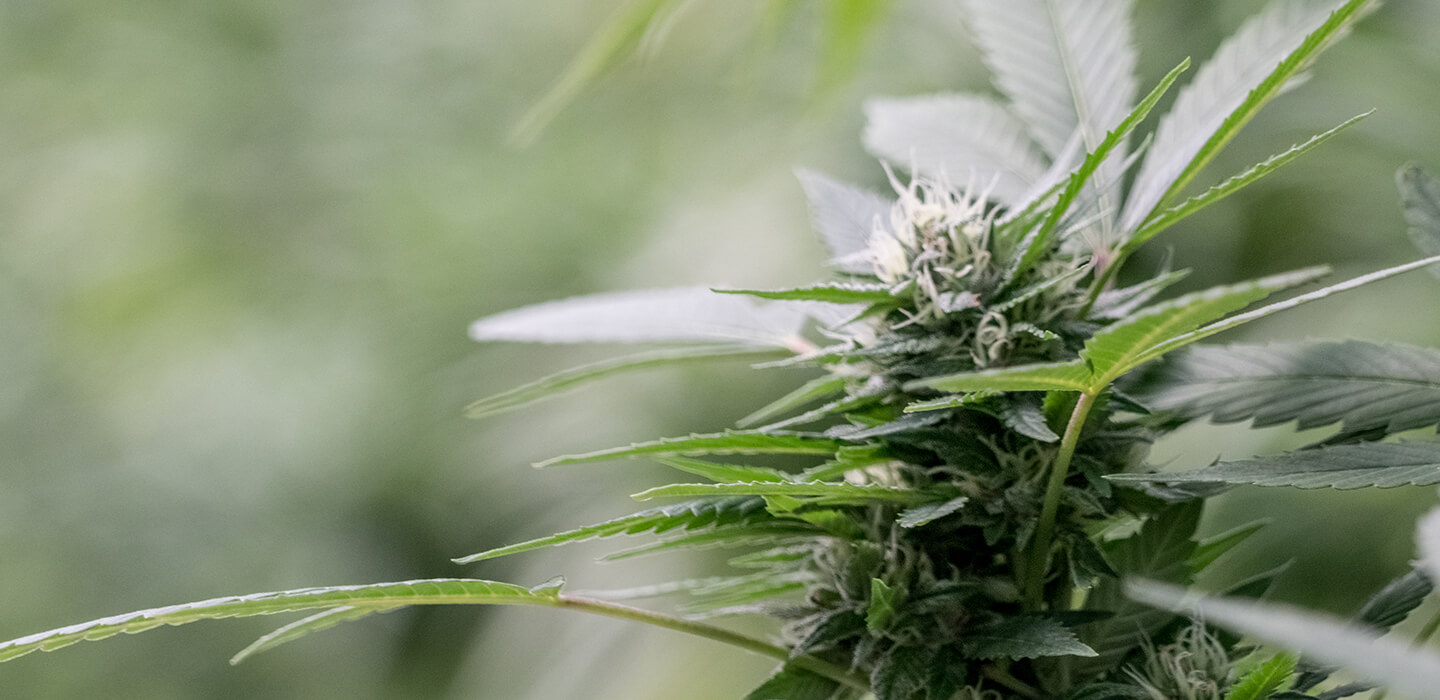
Glossary of Cannabis Decontamination
Your Guide to Cannabis Processing and Safety
Whether you're new to the cannabis industry or a seasoned professional, understanding the technical language of cannabis processing and decontamination is essential. This glossary is designed to serve as a trusted resource for cultivators, processors, dispensary operators, and anyone focused on cannabis safety standards.
From tackling issues like Bud Rot to exploring advanced solutions like Radio Frequency Technology, this glossary provides detailed explanations of the terms and concepts critical to ensuring safe and high-quality cannabis production.
How to Use This Glossary
This glossary is divided into seven sections: Cultivation and pathogens, Post-Harvest Processing, Decontamination Technologies, Quality and Sensory Properties, Understanding Lab Reports, and Regulations and Compliance.
Expand each term to see its definition below!
Explore the Glossary
Cultivation & Pathogens
Aspergillus spp.
Aspergillus species, including A. flavus, A. fumigatus, A. niger, and A. terreus, are fungal contaminants that pose significant risks in cannabis and food production. These molds can produce aflatoxins and cause severe respiratory infections when inhaled, making them one of the most critical to test for. Preventing Aspergillus contamination is essential to maintaining compliance, product quality, and consumer safety.
Penicillium spp.
Penicillium species are molds that thrive in improperly stored or handled cannabis. They are often associated with musty odors and spoilage, and some strains produce ochratoxin A, a toxic compound that threatens consumer health. Their presence is an indicator of poor post-harvest practices and insufficient microbial control.
Botrytis cinerea
Botrytis cinerea, commonly known as gray mold or bud rot, is a fungal pathogen responsible for soft rot in cannabis. It spreads quickly in humid environments, reducing shelf life and rendering affected crops non-compliant for sale. Effective remediation of Botrytis is critical for maintaining profitability and consumer trust.
Mold Spores
Mold spores are microscopic reproductive units of fungi that thrive in moist, humid environments. In cannabis operations, these spores can spread through air, water, pests, or human contact, leading to contamination that jeopardizes crop health and regulatory compliance. Effective control requires maintaining low humidity levels, proper ventilation, and proactive decontamination. Cannabis Mold
Cannabis mold refers to the presence of fungal contaminants, including pathogenic species such as Aspergillus and Penicillium, which thrive in environments with high humidity and poor airflow. Mold contamination poses significant risks, including health hazards to consumers and financial losses for cultivators due to failed compliance testing and potential recalls. Preventing mold growth requires proper humidity control, ventilation, and proactive measures like a post-harvest kill step.
Yeasts
Yeasts are unicellular fungi responsible for spoilage, fermentation, and off-flavors in semi-moist cannabis.
Shiga Toxin-Producing E. coli
Shiga toxin-producing strains of Escherichia coli, represent a serious threat to consumer health, capable of causing severe illness even at very low levels.
Total E. coli
Total E. coli includes both harmless and pathogenic strains, indicating contamination from handling or environmental sources.
Salmonella spp.
Salmonella is a group of bacteria that can cause severe gastrointestinal illness in humans. In cannabis, contamination can occur when plants are exposed to contaminated water, soil amendments such as improperly composted manure, or unsanitary processing environments. In rare cases, Salmonella may be introduced post-harvest through equipment, storage areas, or cross-contamination from other agricultural products. Although it is rarely detected in cannabis, testing programs include Salmonella to protect consumer safety.
Pseudomonas aeruginosa
Pseudomonas aeruginosa is a moisture-loving bacterial contaminant associated with unsanitary processing conditions.
Listeria monocytogenes
Listeria monocytogenes is a foodborne pathogen that causes listeriosis, a serious illness particularly dangerous for immunocompromised individuals.
Aflatoxins (B1, B2, G1, G2)
Aflatoxins are carcinogenic mycotoxins produced by Aspergillus species. They are strictly regulated due to their health risks.
Ochratoxin A
Ochratoxin A is a mycotoxin produced by Aspergillus and Penicillium species, known to cause kidney and liver toxicity in humans.
Post-Harvest Processing
Cannabis Decontamination
Cannabis Decontamination in the cannabis industry involves the removal or neutralization of microbial contaminants such as mold, bacteria, and yeast to meet regulatory compliance and ensure product safety. It is a critical step in post-harvest operations, safeguarding both consumer health and business profitability. Ziel’s Radio Frequency (RF) technology offers a highly effective, non-ionizing decontamination solution, achieving a >99% microbial compliance pass rate without altering the chemical integrity or sensory properties of the flower. Unlike ionizing methods like X-ray or chemical treatments, RF provides a sustainable, organic-compliant process that eliminates pathogens from the flower's surface and core, preserving its quality and maximizing profits.
Mold Remediation
Mold remediation is the process of eliminating fungal contaminants, such as Aspergillus,Penicillium and other molds, from cannabis products to meet regulatory compliance and protect consumer safety. Ziel’s Radio Frequency (RF) technology offers a proactive, non-ionizing approach to mold remediation by penetrating the cannabis flower and killing pathogens without altering its chemical properties. Unlike reactive remediation methods that risk consumer distrust, RF integrates seamlessly into Standard Operating Procedures (SOPs), providing a >99% compliance pass rate, preserving product quality, and supporting organic certification. This efficient solution ensures higher profitability while safeguarding brand reputation.
Microbial Control
Microbial control encompasses processes designed to eliminate pathogens such as mold, bacteria, and fungi from cannabis to meet regulatory standards and protect consumer health. Unlike reactive remediation, which occurs after failed testing, proactive microbial control solutions like Ziel’s Radio Frequency (RF) technology integrate seamlessly into Standard Operating Procedures (SOPs). RF treatment uses non-ionizing radiation to penetrate cannabis flower, eradicating microbial contamination while preserving its molecular integrity, potency, and sensory qualities. With a >99% compliance pass rate and suitability for USDA Organic operations, RF provides an efficient, future-proof method for safeguarding product quality and ensuring operational success.
Pathogen Reduction
Pathogen reduction involves eliminating harmful microorganisms like bacteria, yeast, and mold to ensure product safety and regulatory compliance. Ziel’s innovative Radio Frequency (RF) technology delivers effective pathogen reduction through volumetric heating. Unlike conventional methods, this system uniformly heats the entire mass of a product, preventing surface overheating while maintaining product quality. Radio Frequency is a chemical-free, non-ionizing, and USDA-recognized organic method, making it ideal for growers seeking safe, efficient, and scalable solutions to safeguard consumer health and maximize operational efficiency.
Post-Harvest Processing
Post-harvest processing refers to steps and activities that occur after harvest aimed for preparing the crop for storage, sale and consumption. Post-harvest processing plays a crucial role in ensuring the safety, quality, and compliance of cannabis and agricultural products. Ziel’s advanced technologies, such as Radio Frequency (RF) systems, provide reliable solutions to eliminate microbial pathogens, including yeast, mold, and bacteria, while preserving product integrity & organoleptic qualities.This innovative, chemical-free approach supports organic and GMP-certified operations. By integrating RF treatment into standard operating procedures, cultivators can reduce microbial load, and maximize market readiness, making it an essential step in post-harvest workflows.
Decontamination Technologies
Radio Frequency (RF) Technology
Radio Frequency (RF) technology is a non-ionizing thermal process used to eliminate microbial pathogens in cannabis and food products without compromising product quality. Unlike ionizing methods like X-ray or gamma radiation, RF employs long, low-energy wavelengths to penetrate deeply into the product, generating heat through the oscillation of water molecules. This volumetric heating ensures uniform treatment, targeting microbial pathogens while preserving the natural structure, aroma, and enzymatic properties of the product. Recognized as an organic process by the USDA, RF is an effective, chemical-free solution that meets stringent regulatory compliance with a 99.9% pass rate, making it a trusted choice for industries requiring safe and efficient microbial decontamination.
Non-Ionizing Radiation
Non-ionizing radiation is a safe microbial control solution for cannabis, utilizing long, low-energy wavelengths to penetrate flower and eliminate mold and pathogens without altering its molecular structure. Technologies like Radio Frequency (RF) create an electromagnetic field around the flower, generating heat through water molecule oscillation to ensure complete decontamination while preserving chemical and enzymatic integrity. Unlike ionizing methods, non-ionizing radiation avoids costly labeling requirements and is approved for USDA Organic compliance in other industries, making it a forward-thinking choice for cannabis operators seeking to protect product quality and regulatory readiness.
Ionizing Radiation
Ionizing radiation is a cannabis decontamination technology that uses high-energy wavelengths, such as gamma rays, X-rays, or electron beams (e-beam), to kill mold and pathogens. These methods disrupt DNA within the flower, altering the flower’s molecular structure and diminishing its natural integrity.. Additionally, global regulators, such as those in Germany and Canada, impose strict licensing and labeling requirements for ionizing-treated cannabis, including the mandatory use of the Radura symbol. These regulations, along with off-site processing and additional equipment needs, make ionizing radiation costly and less consumer-friendly compared to non-ionizing solutions like Radio Frequency.
Thermal Processing
Thermal processing is a method that utilizes heat to eliminate microbial pathogens in cannabis and other products while preserving their natural properties. Unlike ionizing technologies such as X-ray or gamma radiation, thermal processing maintains cannabinoid and terpene content, ensuring product quality. Recognized as an organic, non-chemical approach, thermal processing aligns with stringent regulatory standards like European Union Good Manufacturing Processes (EU GMP), making it an effective and compliant solution for global markets.
Quality & Sensory Properties
Organoleptic Properties of Cannabis
Organoleptic properties of cannabis refer to its sensory attributes—taste, smell, texture, and appearance—that define its quality and impact the overall consumer experience. These characteristics are closely tied to the plant’s terpene profile, which contributes to its unique aromas and flavors.
Appearance: The color and trichome coverage of buds provide visual cues about quality and cultivation methods.
- Appearance: The color and trichome coverage of buds provide visual cues about quality and cultivation methods.
- Texture: A spongy yet slightly sticky feel indicates proper curing.
- Aroma: Complex scents, such as citrus, floral, or earthy notes, reflect the terpene composition.
- Flavor: The taste amplifies the aroma during consumption, delivering a smooth, enjoyable experience.
Ziel’s Radio Frequency (RF) technology plays a vital role in preserving these properties during decontamination. By using volumetric heating, RF treatment ensures harmful microorganisms are reduced while safeguarding the delicate terpenes and maintaining the sensory integrity of cannabis. This process allows growers to meet regulatory standards without compromising quality, ensuring an exceptional product for consumers.
Understanding Lab Reports
CFU/g
Colony forming unit per gram / or milliliter. Example: 10,000 CFU/g for TYMC means ten-thousand colony forming units of Total Yeast and Mold in one gram sample.
TNTC
Too numerous to count. Example: the quantities are exceeding the countable limit for a sample.
ND
Not detected.
Total Yeast and Mold Count (TYMC)
Total Yeast and Mold Count (TYMC) measures the colony-forming units (CFU) of yeast and mold in a cannabis sample to assess microbial contamination. TYMC testing is crucial for regulatory compliance and consumer safety, as elevated levels can pose health risks or degrade product quality. Regulatory thresholds for TYMC vary by state and country. The limits could be <10,000 CFU/g for medical use in one state, while they may be higher or lower for recreational use, either within the same state or in another. Advanced remediation technologies like Radio Frequency (RF) treatment effectively reduce TYMC by over 99.9% without compromising the plant’s cannabinoids or terpenes. This non-ionizing, organic-approved process ensures cannabis passes microbial testing while maintaining its natural integrity.
Total Aerobic Microbial Count (TAMC)
Total Aerobic Microbial Count (TAMC) reflects the general bacterial load in a cannabis sample and serves as a key indicator of hygiene and sanitation throughout production.
LOD
Loss of Drying is measured based on the weight loss of water within cannabis flower.
ppb
Part per billion
aw
Water activity. The amount of free water in cannabis flower.
%[w/w]
Percentage of an element in cannabis flower. Example: 20% w/w THC means twenty gram THC in one-hundred gram of flower.
Regulations & Compliance
Cannabis Rescheduling
Cannabis rescheduling refers to the reclassification of marijuana under the U.S. Controlled Substances Act, potentially moving it from Schedule I, where it is considered to have no medical value, to Schedule III, where it would be federally recognized for medical use with a lower potential for abuse. This shift would bring significant changes, including the removal of the restrictive 280E tax code, reducing financial burdens on plant-touching businesses. It would also introduce FDA oversight, likely resulting in stricter manufacturing, testing, and labeling standards. For cannabis operators, preparing for these changes is crucial, particularly regarding compliance with microbial safety standards. Technologies like Ziel's Radio Frequency (RF) offer solutions to meet evolving regulations while maintaining product integrity.
E.U. Good Agricultural and Collection Practice (E.U. GACP) Certification
The E.U. Good Agricultural and Collection Practice (E.U. GACP) Certification is a guideline established by the European Medicines Agency (EMA) to regulate the cultivation and collection of medicinal plants, including cannabis. It sets requirements for cultivation methods, harvesting practices, and documentation to ensure traceability, consistency, and quality of plant-based starting materials. For cannabis producers, GACP compliance is the foundation for supplying raw material that can later meet E.U. GMP standards during processing and manufacturing.
E.U. Good Manufacturing Practice (E.U. GMP) Certification
The E.U. Good Manufacturing Practice (E.U. GMP) Certification is a rigorous standard established by the European Medicines Agency (EMA) to ensure the consistent quality and safety of medicinal products, including cannabis. It governs all aspects of post-harvest processing, including drying, packaging, and decontamination, and is often required for cannabis destined for pharmaceutical markets in Europe.
Meeting Microbial Safety Standards Across Global Markets
Cannabis and food safety standards vary across the U.S., Canada, and E.U., but the goals are similar: protect consumer health and maintain product integrity. While some regions focus on broad hygiene indicators like TYMC and TAMC, others mandate the absence of specific pathogens like Salmonella, Aspergillus, or E. coli.
Ziel’s Radio Frequency treatment systems help cannabis and food producers in all three regions meet these microbial safety benchmarks without compromising product quality. By using RF’s volumetric heating, producers can reduce harmful contaminants without introducing chemicals, steam, or altering the flower’s molecular structure.
If you’d like to review validated microbial reduction data or explore how RF technology can support your regulatory and operational needs, contact the Ziel team for a consultation. We're here to help you deliver safe, compliant, high-quality products to market
More Resources for
Understanding Cannabis Decontamination
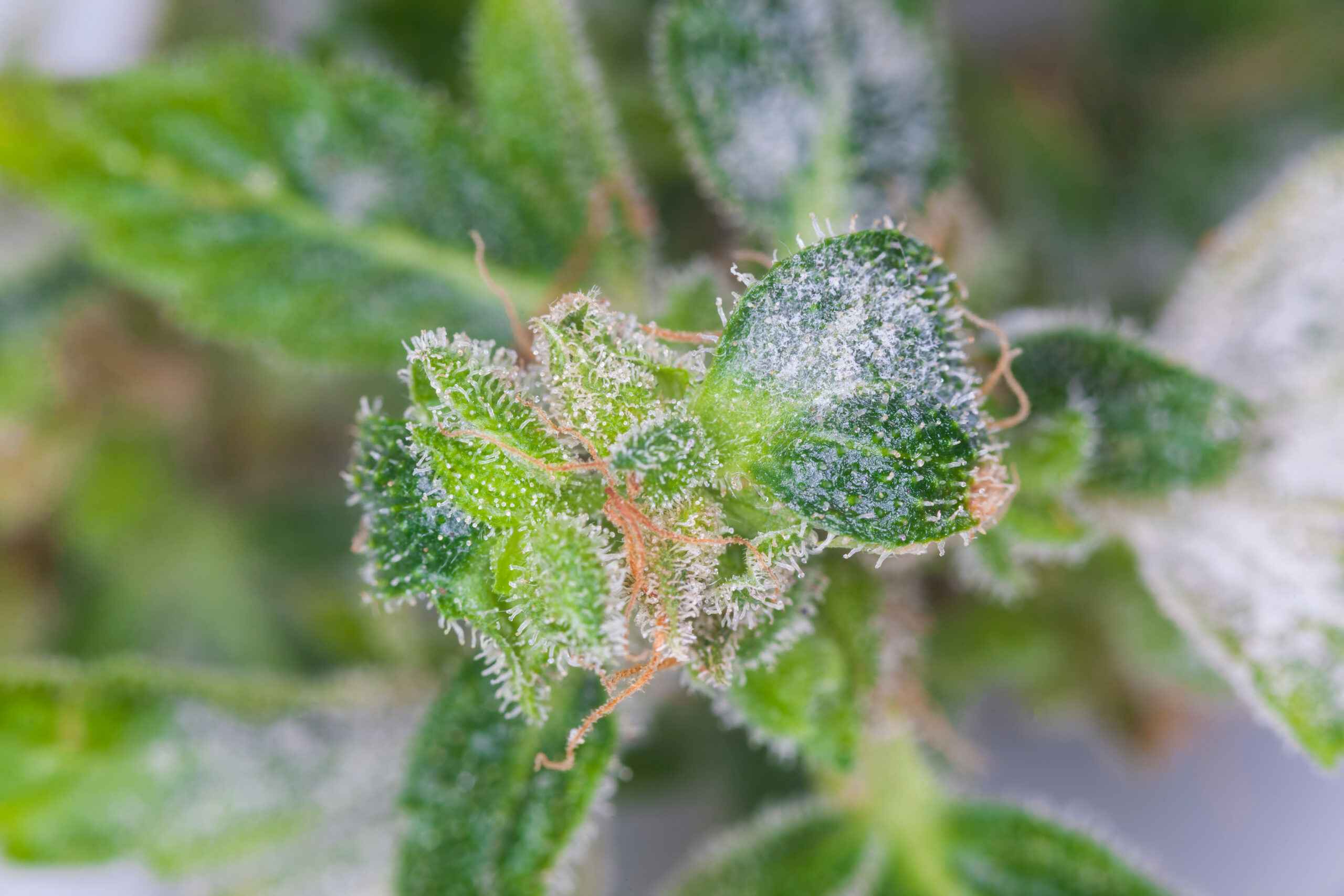
Business Risks of Selling Moldy Weed
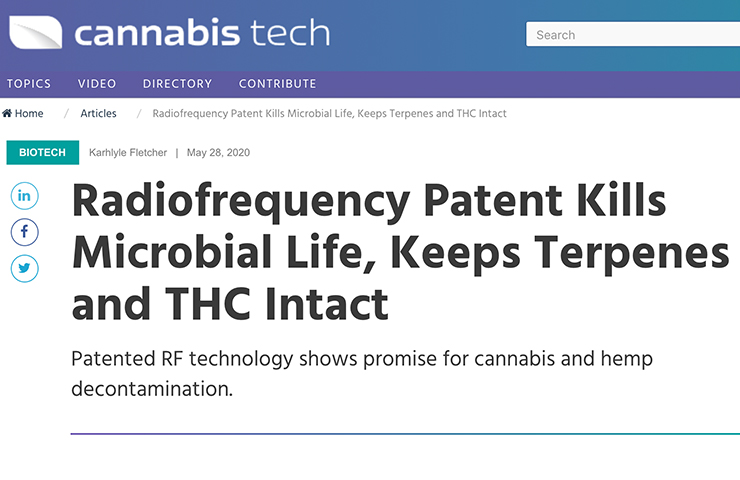
Radio Frequency Patent

Ziel Receives EU GMP Approval For Microbial Control
Contact Us Today
Take the first step to boosting your profit margins. Start the conversation now.
RFX FAQ
Have more questions? Learn more about how the RFX can help your specific operation.
Learn More
Check out our Resources page and download additional information on the solution you're interested in.
